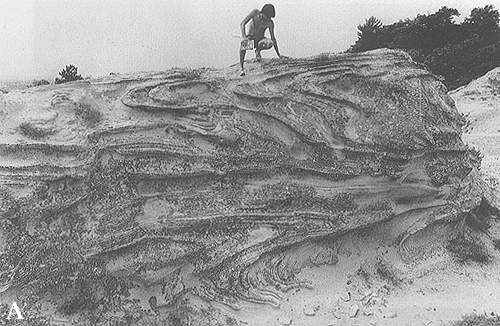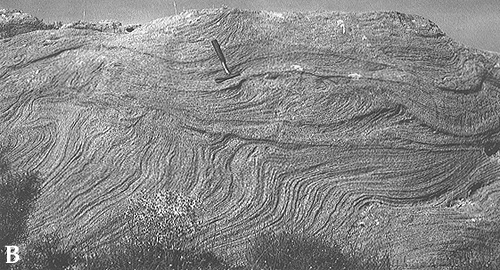

Current drag effects on cross-bedding
Plate 120


Current drag effects on cross-bedding
Plate 120
Oversteepening of foreset bedding was produced at a much larger scale in these examples, from the Miocene Valreas Sandstones, Rho;afne Valley, France. This unit was deposited in a shallow shelf sea, where subaqueous dunes or sandwaves were formed by tidal or storm currents. Along with oversteepened laminae, you can see here that the top of a thick foreset was hooked and overturned in the current direction (plate 120 A), and that master bedding surfaces, on which foresets lie, were also involved in deformation, which culminated in recumbent and cascade folding to the far left.
| Photos: G. Ori 1992. |